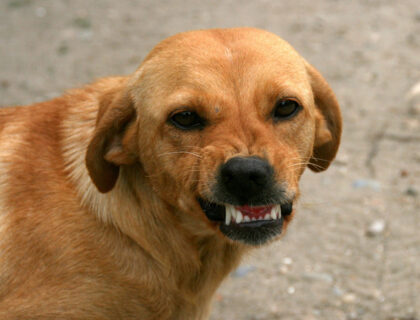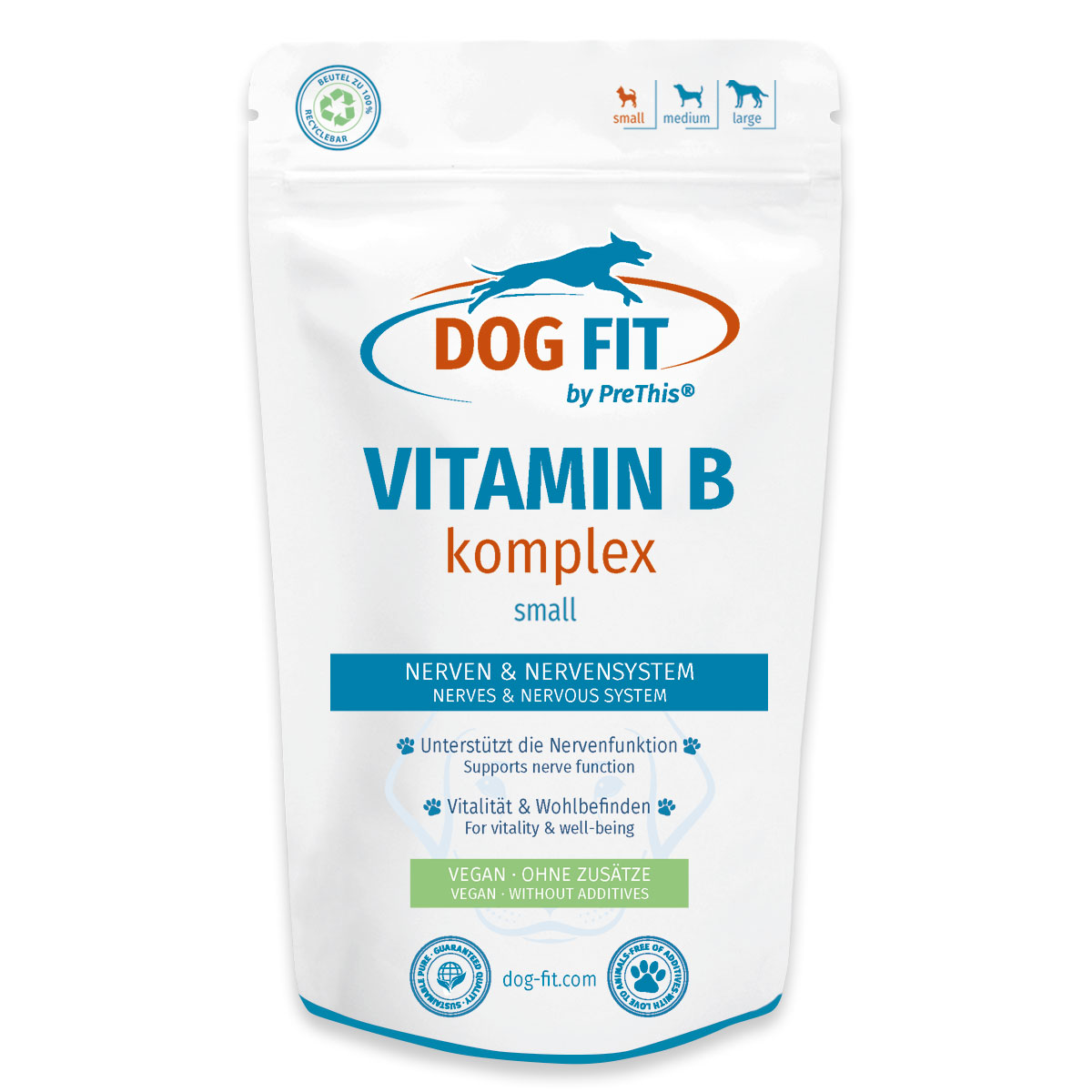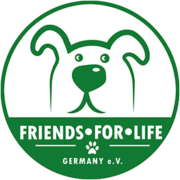 A deep growl, the lips are pulled upwards, the teeth snap shut – every year thousands of people are bitten by dogs in Germany alone. Almost any outcome is possible, from light pressure marks to bloody scratches to gaping bite wounds. The end of a biting attack often depends less on the dog itself than on how the human participants react. Because very few dog bites are actually the result of aggressiveness. Most dogs bite out of fear and insecurity; they are fear biters. These bites can easily be avoided through correct behavior.
A deep growl, the lips are pulled upwards, the teeth snap shut – every year thousands of people are bitten by dogs in Germany alone. Almost any outcome is possible, from light pressure marks to bloody scratches to gaping bite wounds. The end of a biting attack often depends less on the dog itself than on how the human participants react. Because very few dog bites are actually the result of aggressiveness. Most dogs bite out of fear and insecurity; they are fear biters. These bites can easily be avoided through correct behavior.
We will now explain how to properly deal with fear biters and try to put everything in perspective!
What is meant by a fear biter?
Insecure dogs are known as fear biters who experience many situations as unnaturally threatening and try to “protect” themselves with aggressive behavior. These dogs were often not socialized during their puppy phase and were exposed to few stimuli during the crucial formative phase.
This can lead to the fact that even an oncoming pedestrian, a bicycle passing by or an unexpected step in one’s direction is interpreted as a threat, which results in a defensive threatening gesture. Accordingly, these dogs are almost constantly stressed. But so do their owners, because after all they are constantly worried that their dog might bite someone or themselves.
It is therefore important to react quickly to fear-biters and to train them in an adequate repertoire of actions. This requires a lot of time and commitment and sometimes the help of a professional, but ultimately both dog and owner benefit from it because both can enjoy their life together in a more relaxed manner.
Insecure dogs and aggressive dogs – a distinction
Some people might say: “It doesn’t matter whether the dog is fearful or aggressive – after all, a bite is a bite!” However, that’s not true. While an aggressive dog attacks to emphasize its dominance, a fearful dog simply tries to free itself from a seemingly threatening situation. That’s why scared biters usually only cause minor bite wounds and often even just pinch. This is often enough to secure the desired space for escape.
Aggressive dogs, on the other hand, bite to drive away or injure their opponent. To indicate their higher position in the pack or, in the most extreme case, even because they identify a small child as prey. Accordingly, these bites often have much more fatal consequences; attacks can even end fatally.
The signs of a bite are also different. While fearful biters initially try to avoid them, threatening with their tails tucked and a crouched posture, aggressive dogs make themselves big. They fixate on their opponent with a fixed gaze, their fur bristles, their posture is wide, forward-facing and self-confident.
This is how fear bites can be avoided
Since fear biters bite in perceived threatening situations, one would think that bites can be avoided by avoiding threatening situations. Unfortunately, it’s not that easy, because what fear biters perceive as threatening is not always understandable from the outside. The insecurity and fearfulness has often become so entrenched in the animal’s behavior that it is almost impossible to create a space without perceived threats. But that doesn’t mean you can’t do anything. First of all, the thought, the constant fear of a fear bite, has to go in order to be able to start working on the dog. Because the dog senses the concern. Insecure dog + insecure owner = No solution to the problem, but in the worst case the problem increases.
In order for a fearful and insecure dog to meet another dog or person to work well and without incident, its behavior must first be closely observed. Posture and spatial withdrawal are often clear signs that your four-legged friend feels threatened.
So that an insecure dog can be and remain relaxed, note the following points:
- Never approach an insecure dog from behind, but always so that everything is in his field of vision.
- If the dog backs away, you should avoid harassing him or going after him.
- Loud noises and sweeping gesturesravoid anything that could scare the dog.
- Direct eye contact is a sign of dominance in dogs – so don’t stare directly into the eyes of an insecure dog, he could take it as a threat.
- A fearful dog always needs enough space to retreat. Because retreat will always be the first choice for an insecure dog, even before aggression.
Re-educate Fear Biters
Owners of an insecure dog who reacts aggressively out of fear, however, have another option to avoid fear bites in the future. Namely by re-educating the fear biter.
As already mentioned, defensive aggression is often due to inadequate socialization. The dog gets to know other dogs and people from an early age. Certain behaviors are learned and practiced. This gradual adaptation to rules is known as “socialization.” The following example: Ms. Müller’s Chihuahua is handled with kid gloves from an early age. The human mind dominates here. The Chihuahua doesn’t even know that he is small. Other dogs are usually too big and wild and it’s better for the little fur nose to stay at home. Puppy school and training often doesn’t take place, as it’s just a small dog. And if the little dog is suspicious of the neighbor, he will of course be protected. From now on, the dog associates this with a reward situation.
Interaction with other dogs is often completely missing and people act with human reactions to animal behavior (meant kindly, but usually wrong). Learning experience = zero. Uncertainty is spreading. A well-socialized pack mate neither trimmed him nor protected him, and humans reacted humanly, but not animal-like. And the little dog just needs security, security in terms of: I know exactly how to behave now, because I know this situation. If all of this is missing, the result is often clear. Insecure dog, barker, biter. But that is just a short example of many. Animal protection dogs often have negative experiences with people. But whether small or large dog, without sufficient socialization, undesirable behavior patterns develop and they are homemade.
However, even difficult dogs can be resocialized with enough time, commitment and expertise. Since scared biters are usually particularly insecure animals, safety plays a major role in their socialization. The dog must learn to calm down; in any case, an insecure and fearful dog should be given its own quiet room where it can retreat undisturbed in stressful situations.
The role that dog owners play is extremely important
An insecure dog also draws security and self-confidence from the relationship. A stable social system in the home “pack” (i.e. in his family) helps a fearful dog to find security – because if you know where your place is, you don’t have to constantly worry and fluctuate. Consistent daily routines and rituals make it easier to orientate yourself in everyday life; a master or mistress who remains calm even in stressful situations provides security, but also when clear rules apply. For example, the dog is not allowed in the kitchen. Ok, but then always, without exception. The dog knows what’s going on and isn’t angry with anyone about it, but he now knows where he doesn’t belong. Perfect for the dog.
Positive contact with other, well-socialized dogs can also help an insecure four-legged friend to become more relaxed and react less defensively to certain situations. Sometimes it is also worthwhile to provide an insecure dog with a calm second dog – but this is not a panacea.
If the defensive aggression is already pronounced, it is often wiser to get specific help from a dog trainer than to try for a long time yourself while the situation continues to solidify. Don’t be afraid to get help from a professional. Dealing with the problem will definitely have a positive effect on the relationship between the dog owner and the dog!
React before the first bite
If the dog is not yet a fearful biter, but is still an insecure puppy, the intervention is of course easier, because no destructive behavior has yet become established.
However, well-meaning owners of insecure puppies and young dogs often make the same mistake over and over again. If frightening situations arise, the puppy is removed from the situation and comforted through the fright with plenty of petting and attention. The result: The puppy associates his fear with a reward situation. It is better to give the puppy the opportunity to be frightenedto face the situations. As the owner, you should be calm so that the puppy can “imitate” this calmness.
Working with the dog is worth it
Resocializing a fear-biter may be a lot of work and requires time and commitment – but keeping a fear-biter and constantly worrying about whether they will get worse injuries is far more strenuous. The effort put into resocializing the dog is worth it. A relaxed life together with a happy dog is the reward you deserve.
By the way, B vitamins can support the tense nervous system of a fearful biter. B vitamins perform important functions in energy metabolism; they are involved in nerve transmission and the normal production of important neurotransmitters in the brain (including serotonin).
Every dog is unique and deserves trust, patience, and understanding. With loving attention and shared positive experiences, you’ll strengthen your bond and help your four-legged friend feel safe and secure. This way, every day becomes a step toward trust and joy in life.

The content of the articles is for general information purposes only and does not replace diagnosis or treatment by a veterinarian. Reviews or testimonials are individual reports from verified customers. This information does not constitute medical advice and should not be understood as such.
Our daily inspiration comes from the special moments with our dogs. Here we share this enthusiasm and invite you to become part of the DOG FIT community on our social media channels.



Leave a Reply